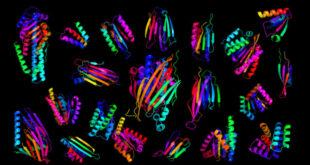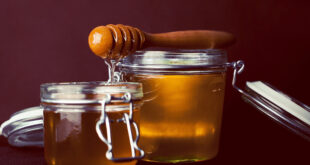When treated with proanthocyanidins, bioactive compounds derived from the fruits of the American cranberry (Vaccinium macrocarpon), human pathogens Escherichia coli, Proteus mirabilis, and Pseudomonas aeruginosa become more sensitive to lower doses of antibiotics, according to a new study published in the journal Advanced Science. What’s more, the pathogenic bacteria don’t develop resistance to the antibiotics.
Maisuria et al demonstrated that cranberry proanthocyanidins prevent the evolution of resistance to tetracycline in Escherichia coli and Pseudomonas aeruginosa, rescue antibiotic efficacy against antibiotic-exposed cells, and repress biofilm formation. Proanthocyanidins also have a potentiating effect on a broad range of antibiotic classes against pathogenic Escherichia coli, Proteus mirabilis, and Pseudomonas aeruginosa.
“Our hope is to reduce the doses of antibiotics required in human and veterinary medicine as part of efforts to combat antibiotic resistance,” said McGill University’s Professor Nathalie Tufenkji and colleagues.
Given the popular belief that drinking cranberry juice is helpful against urinary tract infections, Professor Tufenkji’s team sought to find out more about the berry’s molecular properties by treating various bacteria with a cranberry extract.
The bacteria selected for study were those responsible for urinary tract infections, pneumonia, and gastro-enteritis: Proteus mirabilis, Pseudomonas aeruginosa, and Escherichia coli.
“Normally when we treat bacteria with an antibiotic in the lab, the bacteria eventually acquire resistance over time,” Professor Tufenkji said.
“But when we simultaneously treated the bacteria with an antibiotic and the cranberry extract, no resistance developed. We were very surprised by this, and we see it as an important opportunity.”
Analyses showed that the cranberry extract increases bacterial sensitivity to antibiotics by acting in two ways.
First, it makes the bacterial cell wall more permeable to the antibiotic, and second, it interferes with the mechanism used by the bacteria to pump out the antibiotic.
Consequently, the antibiotic penetrates more easily, and the bacteria have a harder time getting rid of it, which explains why the drug is effective at lower doses.
“The activity is generated by molecules called proanthocyanidins,” said Professor Éric Déziel, from the Institut National de la Recherche Scientifique.
“There are several different kinds of proanthocyanidins, and they may work together to deliver this outcome.”
“We’ll need to do more research to determine which ones are most active in synergy with the antibiotic.”
_____
Vimal B. Maisuria et al. Proanthocyanidin Interferes with Intrinsic Antibiotic Resistance Mechanisms of Gram-Negative Bacteria. Advanced Science, published online May 28, 2019; doi: 10.1002/advs.201802333
 #Bizwhiznetwork.com Innovation ΛI |Technology News
#Bizwhiznetwork.com Innovation ΛI |Technology News




